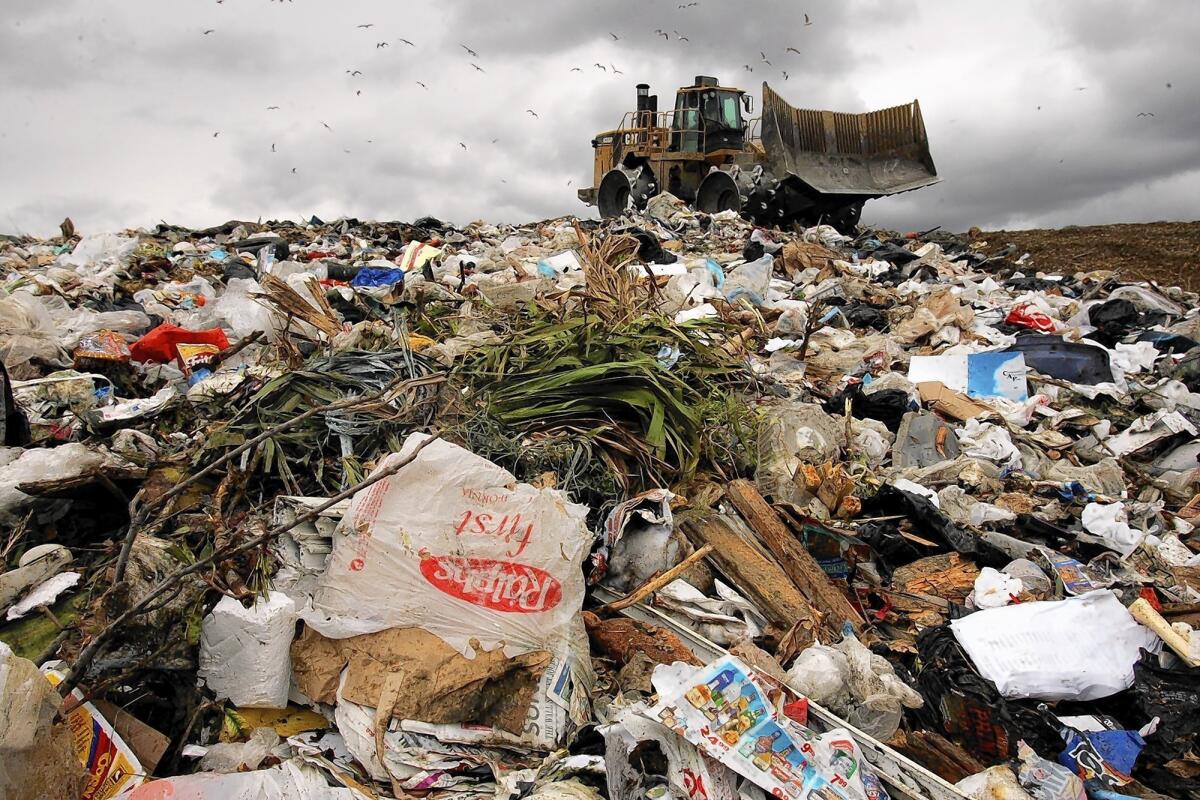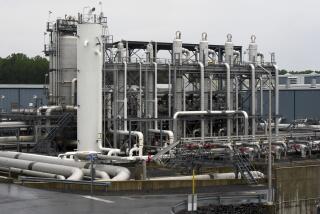Obama administration targets methane emissions

WASHINGTON — In an effort to deliver on President Obama’s pledge last summer to tackle emissions that drive climate change, the White House announced a strategy to limit releases of methane, a highly potent greenhouse gas.
The methane strategy, disclosed Friday, is the most recent in a string of climate change initiatives that the White House has unveiled at a rapid pace in recent weeks. It lays the groundwork for regulations that could affect agriculture and the oil, gas and coal industries.
Carbon dioxide from the combustion of fossil fuels is the biggest contributor to climate change, but methane, the chief component of natural gas, is estimated to be more than 20 times more potent at trapping heat in the atmosphere.
Methane emissions make up 9% of the country’s greenhouse gas emissions and are on track to increase, officials said. Among the biggest sources of methane going into the atmosphere are leaks from oil and gas facilities; seepage from coal mines; landfills; and livestock, especially cows.
The administration’s “Strategy to Reduce Methane Emissions” lays out a timetable for the Environmental Protection Agency and the departments of the Interior, Energy and Agriculture to find ways to curtail each of those sources.
“When fully implemented, the policies in the methane strategy will improve public health and safety while providing more energy to power communities, farms, factories and power plants,” said Dan Utech, the White House’s point person on energy and climate change.
Under the strategy, much of the work of curtailing the gas will fall to the EPA. Agency officials are expected to identify approaches to cut methane from oil and gas production by fall, and if the agency decides to issue new rules, they must be completed by the end of 2016.
One complication in reducing methane emissions is that the amount currently released in the U.S. remains unclear.
Unlike carbon dioxide, which comes mostly from cars and trucks and from such big emitters as power plants and refineries, methane gas comes from many diffuse sources. Experts disagree about the best way to measure methane emissions.
Independent studies have concluded that methane emissions in the continental U.S. might be 50% greater than the EPA’s official estimates.
The EPA’s estimates show that methane emissions in the United States dropped slightly from 2011 to 2012. But emissions from oil and gas operations, the nation’s largest source, have risen in states such as Colorado where fossil fuel production is booming.
Independent research has shown that methane leaks occur across the oil and gas production process, from the wellhead to compressor stations and above-ground pipelines.
In February, Colorado became the first state to regulate methane emissions from the oil and gas sector, requiring the industry to detect and fix leaks and install equipment to capture 95% of methane emissions.
Oil and gas industry representatives voiced mixed reactions to the White House announcement.
Howard Feldman, the American Petroleum Institute’s director of regulatory affairs, said that the industry’s voluntary efforts to reduce methane were adequate and that “additional regulations are not necessary and could have a chilling effect on the American energy renaissance.”
But Marty Durbin, president of America’s Natural Gas Alliance, a trade group of natural gas production companies, said the organization appreciated the administration’s collaborative process and looked forward to “being part of the solution.”
The EPA also must propose updated standards this summer to cut methane from landfills.
The agency will work with the Agriculture and Energy departments to cut methane from agriculture, largely from cattle flatulence and manure. The agencies will work on voluntary programs to speed the adoption of methane digesters, which use the gas from cow manure to produce electricity.
But methane digesters already in use are expensive, and there are sometimes no customers for the power they produce, which makes them a tricky sell to farmers, said Andrew Walmsley, director of government relations for the American Farm Bureau Federation.
Obama pledged five years ago that by 2020, the U.S. would cut its greenhouse gas emissions by 17% below 2005 levels. In June, he said he would use his executive powers to deal with sources of greenhouse gases since Congress had deadlocked on climate legislation.
In addition to the methane strategy, the administration has previously announced tougher fuel economy standards for heavy-duty long-haul trucks. In September, the EPA proposed rules to cut greenhouse gas emissions from new power plants, and in June, the agency is expected to propose rules for existing power plants.







